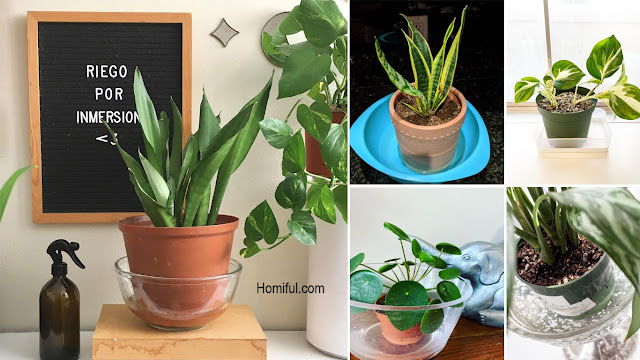 |
| Pros And Cons Of Bottom-Watering Plants |
Homiful.com -- Watering is very important for your plants, but it isn't always easy as it seem. Did you know that you may water plants in ways other than from above? That is, indeed, bottom watering! Bottom watering is one of the greatest strategies since it keeps the leaves dry and saturates the soil more evenly than top watering. Of course, this method has its own set of pros and cons that you must consider before using it.
What Is Bottom Watering?
 |
| @theplantypotter |
Bottom watering is the method of slowly soaking the soil from below using capillary action. Bottom watering puts a shallow reservoir of water under the plant and letting the liquid to soak up into the soil. This method works for both loose and compact soil. It works well for small to medium-sized plants that can be easily moved.
How To Bottom Water Plants
 |
| @soiledplanties |
- Find a basin or other large enough reservoir to contain your plant(s).
- Fill the bowl with an inch or two of water and place the plant(s) inside.
- Allow the plant to soak in the reservoir for a long period of time. The medium should be fully soaked in 10 to 30 minutes, depending on the permeability of the soil and the plant's pot size and ability to drain.
- There is no time limit on how long you may leave a plant in water. A half-hour is fine but leaving them for hours is not. You can feel the topsoil to make sure it’s moist before removing it from the water.
Bottom Watering Pros
 |
| @lifewithdrea |
- Thorough Saturation: Bottom watering moistens the entire soil mass. Ensures same penetration, as compared to top-down watering, which might leave areas dry.
- Rehydrates Dry Soil: Bottom watering rehydrates even the most desiccated parts of the soil.
- Doesn’t Risk Foliage: Bottom watering keeps water from remaining on leaves or staying in joints. This prevents circumstances that encourage fungus or decay.
- Simple Fertilization: By adding a slight dilution of fertilizer to the reservoir's water, all of the roots are nourished. It effectively distributes nourishment throughout the soil.
- Encourages Natural Root Growth: Because bottom watering moistens the soil beneath the plant, roots develop naturally downward.
- Reduces Gnats And Mites: Although it is preferable not to let water to penetrate all the way to the surface, bottom watering will still assist minimize your gnat population.
- Reduces soil disturbance: ideal if you want to maintain a top dressing or arrangement in place. Bottom watering does not cause seeds to fall out of furrows or uproot little plants.
- Reduces Contagion Risk: Because bottom watering does not entail splashing or spraying, it reduces the risk of pathogen transmission.
Bottom Watering Cons
.jpg) |
| @lifewithdrea |
- Takes Too Long: Bottom watering requires less actual hands-on time, but the soaking process itself takes longer.
- Doesn’t Flush The Soil: The biggest drawback of bottom watering is that it does not flush the soil. Since excessive fertilizer and other chemicals remain in the pot, they can contaminate the soil over time.
Like this article? Don't forget to share and leave your thumbs up to keep support us. Stay tuned for more interesting articles from us in the future!
For those of you looking for a minimalist home design that ranges from simple to modern. Please leave your message and comments on Home Lovers on Facebook.
This article should be useful for those of you looking for design ideas and house plans.
Hopefully, you will find it easier to create your ideal home.
Don't forget to share it with your friends and family so that it can help others.
Author : Rieka
Editor : Munawaroh
Source : Various sources
Homiful.com is a collection of minimalist home designs and floor plans ranging from simple to modern. There are also several home decorating tips and tricks in various themes. Our main theme is the design and layout of the house, as well as the inspiration for the living room, bedroom, family room, bathroom, house prayer room, house terrace, and child's bedroom.


